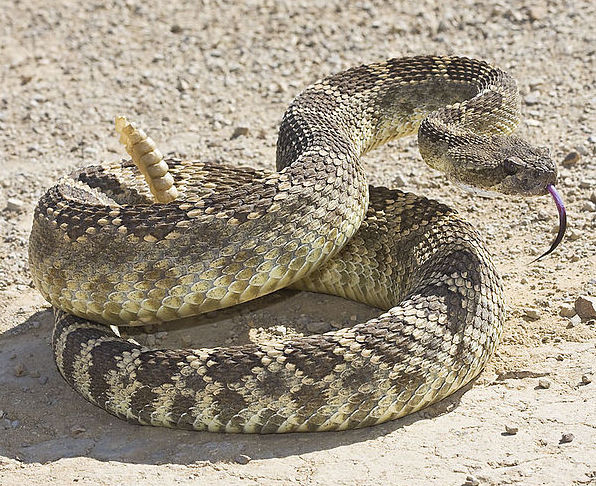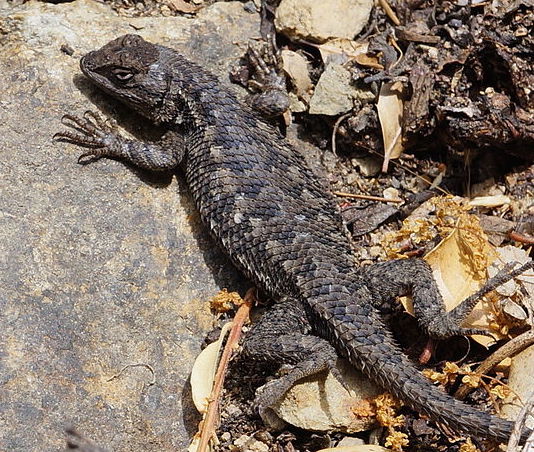Reptiles
 While the Sierra Nevada is home to many reptiles, including the Western pond turtle (Actinemys marmorata) and the Northern Pacific rattlesnake (Crotalus oreganus oreganus—the only venomous snake in the park), most are rarely seen. Of the park's 22 reptile species, the most conspicuous is the Western fence lizard (Sceloporus occidentalis). Visitors walking along trails are likely to spot them basking on or darting across rocks and boulders. Occasionally, you may encounter a male lizard bold enough to stand his ground as you approach. Males defend their territory by bobbing their
While the Sierra Nevada is home to many reptiles, including the Western pond turtle (Actinemys marmorata) and the Northern Pacific rattlesnake (Crotalus oreganus oreganus—the only venomous snake in the park), most are rarely seen. Of the park's 22 reptile species, the most conspicuous is the Western fence lizard (Sceloporus occidentalis). Visitors walking along trails are likely to spot them basking on or darting across rocks and boulders. Occasionally, you may encounter a male lizard bold enough to stand his ground as you approach. Males defend their territory by bobbing their heads and doing a push-up display in the hopes of scaring off intruders. However, they do know when they are outmatched—if you get too close, the male will eventually bolt. Although the Western fence lizard is very common, it has an incredible ability. Juvenile ticks carrying Lyme disease latch onto lizards and ingest their blood. When this happens, special proteins in the Western fence lizard's blood kill the Lyme disease bacteria, curing the tick of Lyme disease.
heads and doing a push-up display in the hopes of scaring off intruders. However, they do know when they are outmatched—if you get too close, the male will eventually bolt. Although the Western fence lizard is very common, it has an incredible ability. Juvenile ticks carrying Lyme disease latch onto lizards and ingest their blood. When this happens, special proteins in the Western fence lizard's blood kill the Lyme disease bacteria, curing the tick of Lyme disease.
More Information:
California Herps- Sierra Fence Lizard – Sceloporus occidentalis taylori: http://www.californiaherps.com/lizards/pages/s.o.occidentalis.html
National Park Service- Reptile Checklist: http://www.nps.gov/yose/learn/nature/reptilespecies.htm
National Park Service- Reptiles: http://www.nps.gov/yose/learn/nature/reptiles.htm



